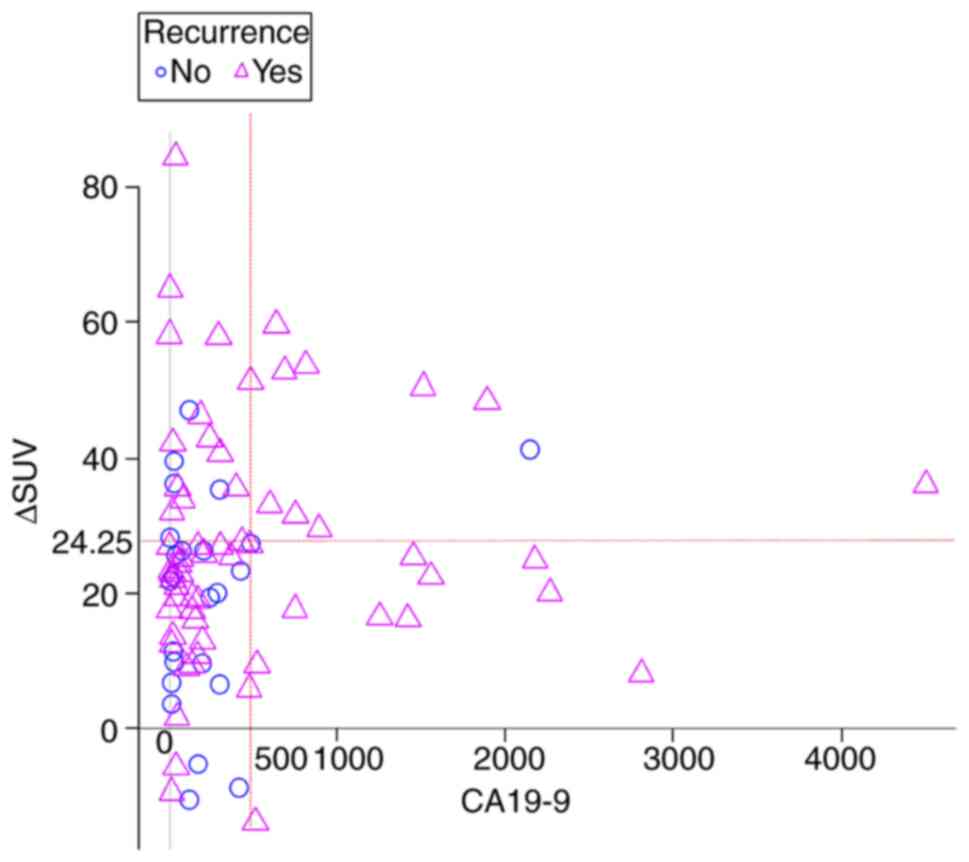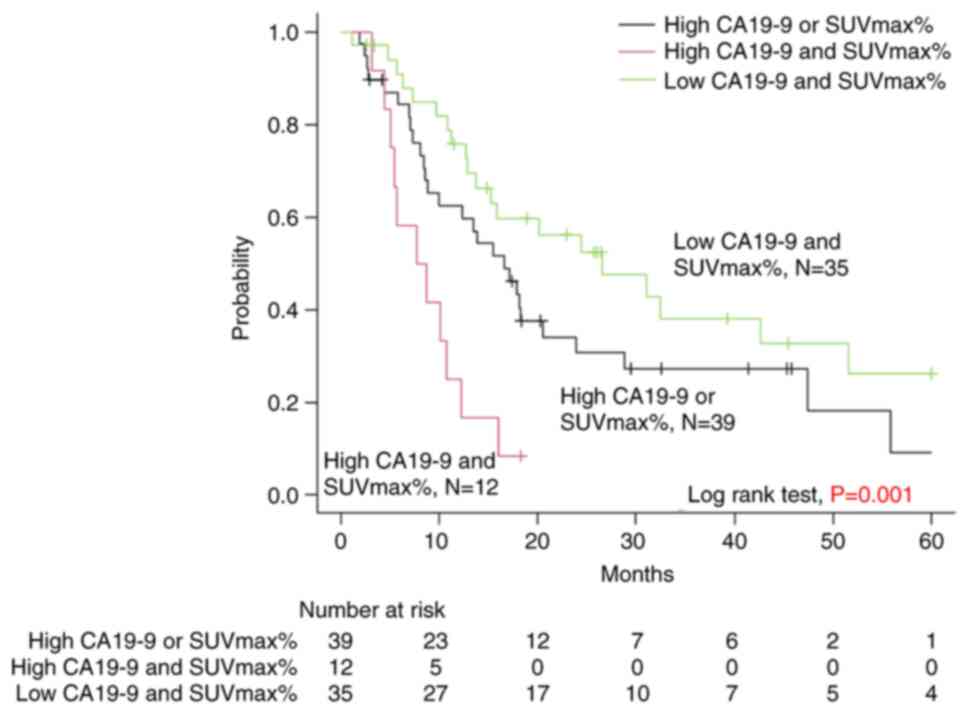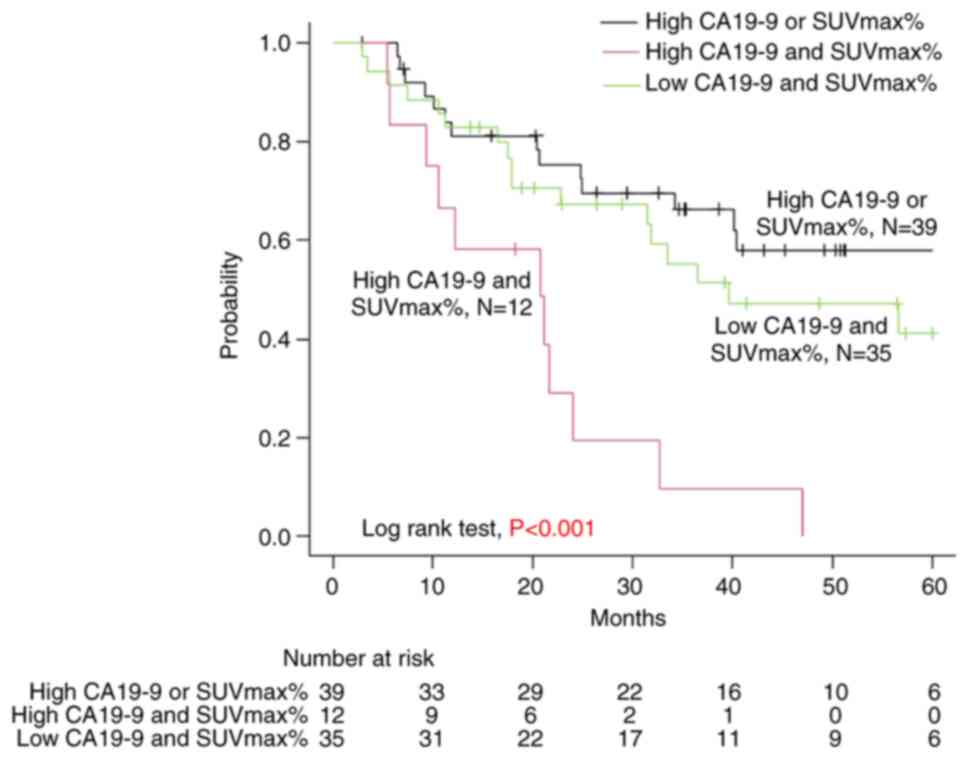|
1
|
Masiak-Segit W, Rawicz-Pruszyński K,
Skórzewska M and Polkowski W: Surgical treatment of pancreatic
cancer. Pol Przegl Chir. 90:45–53. 2018. View Article : Google Scholar : PubMed/NCBI
|
|
2
|
Einama T, Takihata Y, Aosasa S, Konno F,
Kobayashi K, Yonamine N, Fujinuma I, Tsunenari T, Nakazawa A,
Shinto E, et al: Prognosis of pancreatic cancer based on
resectability: A single center experience. Cancers (Basel).
15:11012023. View Article : Google Scholar : PubMed/NCBI
|
|
3
|
National Comprehensive Cancer Network
(NCCN), . Clinical Practice Guidelines in Oncology (NCCN
guidelines®): Pancreatic adenocarcinoma. NCCN; Plymouth
Meeting, PA: 2023, https://www.nccn.org/patients/guidelines/content/PDF/pancreatic-patient.pdf
|
|
4
|
Isaji S, Mizuno S, Windsor JA, Bassi C,
Fernández-Del Castillo C, Hackert T, Hayasaki A, Katz MHG, Kim SW,
Kishiwada M, et al: International consensus on definition and
criteria of borderline resectable pancreatic ductal adenocarcinoma
2017. Pancreatology. 18:2–11. 2018. View Article : Google Scholar : PubMed/NCBI
|
|
5
|
Hartwig W, Strobel O, Hinz U, Fritz S,
Hackert T, Roth C, Büchler MW and Werner J: CA19-9 in potentially
resectable pancreatic cancer: Perspective to adjust surgical and
perioperative therapy. Ann Surg Oncol. 20:2188–2196. 2013.
View Article : Google Scholar : PubMed/NCBI
|
|
6
|
Azizian A, Rühlmann F, Krause T, Bernhardt
M, Jo P, König A, Kleiß M, Leha A, Ghadimi M and Gaedcke J: CA19-9
for detecting recurrence of pancreatic cancer. Sci Rep.
10:13322020. View Article : Google Scholar : PubMed/NCBI
|
|
7
|
Liu H, Zenati MS, Rieser CJ, Abbas AA, Lee
KK, Singji AD, Bahary N, Hogg ME, Zeh HJ III and Zureikat AH:
CA19-9 change during neoadjuvant therapy may guide the need for
additional adjuvant therapy following resected pancreatic cancer.
Ann Surg Oncol. 27:3950–3960. 2020. View Article : Google Scholar : PubMed/NCBI
|
|
8
|
Mie T, Ozaka M, Okamoto T, Takeda T,
Ushida Y, Mori C, Furukawa T, Yamada Y, Kasuga A, Matsuyama M, et
al: CA19-9 reduction after 4 months of treatment is a prognostic
factor for locally advanced pancreatic cancer. In Vivo.
36:2844–2851. 2022. View Article : Google Scholar : PubMed/NCBI
|
|
9
|
Yazawa S, Asao T, Izawa H, Miyamoto Y and
Matta KL: The presence of CA19-9 in serum and saliva from Lewis
blood-group negative cancer patients. Jpn J Cancer Res. 79:538–543.
1988. View Article : Google Scholar : PubMed/NCBI
|
|
10
|
Einama T, Yamagishi Y, Takihata Y, Konno
F, Kobayashi K, Yonamine N, Fujinuma I, Tsunenari T, Kouzu K,
Nakazawa A, et al: Clinical impact of dual time point
18F-fluorodeoxyglucose positron emission
tomography/computed tomography fusion imaging in pancreatic cancer.
Cancers (Basel). 14:36882022. View Article : Google Scholar : PubMed/NCBI
|
|
11
|
Diederichs CG, Staib L, Glatting G, Beger
HG and Reske SN: FDG PET: Elevated plasma glucose reduces both
uptake and detection rate of pancreatic malignancies. J Nucl Med.
39:1030–1033. 1998.PubMed/NCBI
|
|
12
|
Motoi F, Kosuge T, Ueno H, Yamaue H, Satoi
S, Sho M, Honda G, Matsumoto I, Wada K, Furuse J, et al: Randomized
phase II/III trial of neoadjuvant chemotherapy with gemcitabine and
S-1 versus upfront surgery for resectable pancreatic cancer
(Prep-02/JSAP05). Jpn J Clin Oncol. 49:190–194. 2019. View Article : Google Scholar : PubMed/NCBI
|
|
13
|
Wang XY, Yang F, Jin C and Fu DL: Utility
of PET/CT in diagnosis, staging, assessment of resectability and
metabolic response of pancreatic cancer. World J Gastroenterol.
20:15580–15589. 2014. View Article : Google Scholar : PubMed/NCBI
|
|
14
|
Evangelista L, Zucchetta P, Moletta L,
Serafini S, Cassarino G, Pegoraro N, Bergamo F, Sperti C and
Cecchin D: The role of FDG PET/CT or PET/MRI in assessing response
to neoadjuvant therapy for patients with borderline or resectable
pancreatic cancer: A systematic literature review. Ann Nucl Med.
35:767–776. 2021. View Article : Google Scholar : PubMed/NCBI
|
|
15
|
Pu Y, Wang C, Zhao S, Xie R, Zhao L, Li K,
Yang C, Zhang R, Tian Y, Tan L, et al: The clinical application of
18F-FDG PET/CT in pancreatic cancer: A narrative review.
Transl Cancer Res. 10:3560–3575. 2021. View Article : Google Scholar : PubMed/NCBI
|
|
16
|
Ghidini M, Vuozzo M, Galassi B, Mapelli P,
Ceccarossi V, Caccamo L, Picchio M and Dondossola D: The role of
positron emission tomography/computed tomography (PET/CT) for
staging and disease response assessment in localized and locally
advanced pancreatic cancer. Cancers (Basel). 13:41552021.
View Article : Google Scholar : PubMed/NCBI
|
|
17
|
Lee JW, Kang CM, Choi HJ, Lee WJ, Song SY,
Lee JH and Lee JD: Prognostic value of metabolic tumor volume and
total lesion glycolysis on preoperative 18F-FDG PET/CT
in patients with pancreatic cancer. J Nucl Med. 55:898–904. 2014.
View Article : Google Scholar : PubMed/NCBI
|
|
18
|
Mohamed E, Needham A, Psarelli E, Carroll
M, Vinjamuri S, Sanghera B, Wong WL, Hlloran C and Ghaneh P:
Prognostic value of 18FDG PET/CT volumetric parameters
in the survival prediction of patients with pancreatic cancer. Eur
J Surg Oncol. 46:1532–1538. 2020. View Article : Google Scholar : PubMed/NCBI
|
|
19
|
Fiore M, Taralli S, Trecca P, Scolozzi V,
Marinelli L, Triumbari EKA, Caputo D, Angeletti S, Ciccozzi M,
Coppola A, et al: A bio-imaging signature as a predictor of
clinical outcomes in locally advanced pancreatic cancer. Cancers
(Basel). 12:20162020. View Article : Google Scholar : PubMed/NCBI
|
|
20
|
Higashi K, Clavo AC and Wahl R: Does FDG
uptake measure proliferative activity of human cancer cells? In
vitro comparison with DNA flow cytometry and tritiated thymidine
uptake. J Nucl Med. 34:414–419. 1993.PubMed/NCBI
|
|
21
|
Sun Y, Duan Q, Wang S, Zeng Y and Wu R:
Diagnosis of pancreatic cancer using 18F-FDG PET/CT and
CA19-9 with SUVmax association to clinical characteristics. J BUON.
20:452–459. 2015.PubMed/NCBI
|
|
22
|
Saleh Farghaly HR, Mohamed Sayed MH, Nasr
HA and Abdelaziz Maklad AM: Dual time point fluorodeoxyglucose
positron emission tomography/computed tomography in differentiation
between malignant and benign lesions in cancer patients. Does it
always work? Indian J Nucl Med. 30:314–319. 2015. View Article : Google Scholar : PubMed/NCBI
|
|
23
|
Xi Y, Guo R, Hu J, Zhang M, Zhang X and Li
B: 18F-fluoro-2-deoxy-D-glucose retention index as a prognostic
parameter in patients with pancreatic cancer. Nucl Med Commun.
35:1112–1118. 2014. View Article : Google Scholar : PubMed/NCBI
|
|
24
|
Hata T, Chiba K, Mizuma M, Masuda K,
Ohtsuka H, Nakagawa K, Morikawa T, Hayashi H, Motoi F and Unno M:
Levels of tumor markers CEA/CA 19-9 in serum and peritoneal lavage
predict postoperative recurrence in patients with pancreatic
cancer. Ann Gastroenterol Surg. 6:862–872. 2022. View Article : Google Scholar : PubMed/NCBI
|
|
25
|
Tajima H, Makino I, Ohbatake Y, Nakanuma
S, Hayashi H, Nakagawara H, Miyashita T, Takamura H and Ohta T:
Neoadjuvant chemotherapy for pancreatic cancer: Effects on cancer
tissue and novel perspectives. Oncol Lett. 13:3975–3981. 2017.
View Article : Google Scholar : PubMed/NCBI
|
|
26
|
Tang TY, Li X, Zhang Q, Guo CX, Zhang XZ,
Lao MY, Shen YN, Xiao WB, Ying SH, Sun K, et al: Development of a
novel multiparametric MRI radiomic nomogram for preoperative
evaluation of early recurrence in resectable pancreatic cancer. J
Magn Reson Imaging. 52:231–245. 2020. View Article : Google Scholar : PubMed/NCBI
|

















